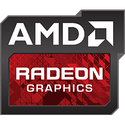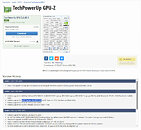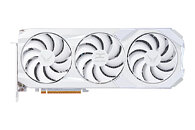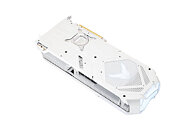
ASUS TUF GPU Mix-Up Creates Rare Radeon-GeForce Hybrid
Sometimes GPU AIBs partners design a cooler and adapt it to more models, typically within a single GPU family or from the same manufacturer, such as AMD or NVIDIA. Today, we are witnessing what might appear to be the first crossover, with an ASUS TUF Gaming Radeon RX 9070 XT OC Edition featuring a GeForce RTX badge. Reddit user Fantastic-Ad8410 encountered persistent display artifacts on his Radeon RX 9070 XT OC Edition and returned it to Micro Center for an exchange. He expected an identical replacement, but upon unboxing at home he discovered a surprising anomaly. The card's backplate clearly reads "AMD Radeon RX 9070 XT" while the fan shroud prominently displays "GeForce RTX 5070 Ti." Both the Radeon RX 9070 XT and the GeForce RTX 5070 Ti employ very similar thermal solutions, with respective TDPs of 304 W and 300 W, so ASUS uses the same dual-fan cooler design on both models.
This is not an isolated incident. Approximately one month earlier, another Redditor, Blood-Wolfe, reported that an ASUS TUF Gaming GeForce RTX 5070 Ti OC Edition arrived bearing Radeon branding on its top panel. Given the nearly identical mounting points and the proximity of cooler assembly stations, a single misplaced component can lead to these hybrid graphics cards. A momentary mix-up on the production line allowed parts intended for one GPU to be fitted to another. In practical terms, the mixed-brand card performs exactly like a standard Radeon RX 9070 XT. The PCB, GPU silicon, and memory modules are all genuine AMD components, so gaming benchmarks and performance metrics match official specifications. Yet this unexpected blend of AMD and NVIDIA branding has sparked lively debate online. Whether Fantastic-Ad8410 opts to keep this one-of-a-kind GPU or seek another replacement remains to be seen, but this GPU is now definitely a collectible for some enthusiasts.
This is not an isolated incident. Approximately one month earlier, another Redditor, Blood-Wolfe, reported that an ASUS TUF Gaming GeForce RTX 5070 Ti OC Edition arrived bearing Radeon branding on its top panel. Given the nearly identical mounting points and the proximity of cooler assembly stations, a single misplaced component can lead to these hybrid graphics cards. A momentary mix-up on the production line allowed parts intended for one GPU to be fitted to another. In practical terms, the mixed-brand card performs exactly like a standard Radeon RX 9070 XT. The PCB, GPU silicon, and memory modules are all genuine AMD components, so gaming benchmarks and performance metrics match official specifications. Yet this unexpected blend of AMD and NVIDIA branding has sparked lively debate online. Whether Fantastic-Ad8410 opts to keep this one-of-a-kind GPU or seek another replacement remains to be seen, but this GPU is now definitely a collectible for some enthusiasts.



















































































